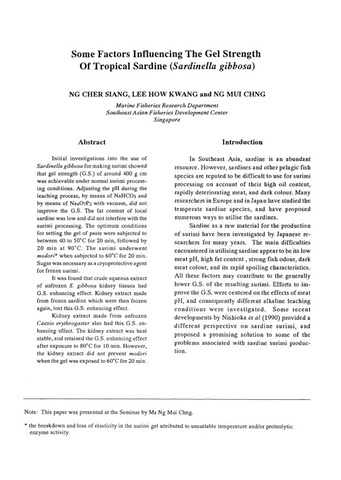Some factors influencing the gel strength of tropical sardine (Sardinella gibbosa)
Share
Abstract
Initial investigations into the use of Sardinella gibbosa for making surimi showed that gel strength (G.S.) of around 400 g cm was achievable under normal surimi processing conditions. Adjusting the pH during the leaching process, by means of NaHCO3 and by means of Na4O7P2 with vacuum, did not improve the G.S. The fat content of local sardine was low and did not interfere with the surimi processing. The optimum conditions for setting the gel of paste were subjected to between 40 to 50° C for 20 min, followed by 20 min at 90°C. The surimi underwent modori* when subjected to 60°C for 20 min. Sugar was necessary as a cryoprotective agent for frozen surimi.
It was found that crude aqueous extract of unfrozen S. gibbosa kidney tissues had G.S. enhancing effect. Kidney extract made from frozen sardine which were then frozen again, lost this G.S. enhancing effect.
Kidney extract made from unfrozen Caesio erythrogaster also had this G.S. enhancing effect. The kidney extract was heat stable, and retained the G.S. enhancing effect after exposure to 80°C for 10 min. However, the kidney extract did not prevent modori when the gel was exposed to 60°C for 20 min.
Suggested Citation
Ng, C. S., Lee, H. K., & Ng, M. C. (1991). Some factors influencing the gel strength of tropical sardine (Sardinella gibbosa). In K. K. Hooi, K. Miwa, & M. B. Salim (Eds.), Proceedings of the Seminar on Advances in Fishery Post-Harvest Technology in Southeast Asia: Singapore, 6-11 May, 1991 (pp. 236-249). Singapore: Marine Fisheries Research Department, Southeast Asian Fisheries Development Center.

